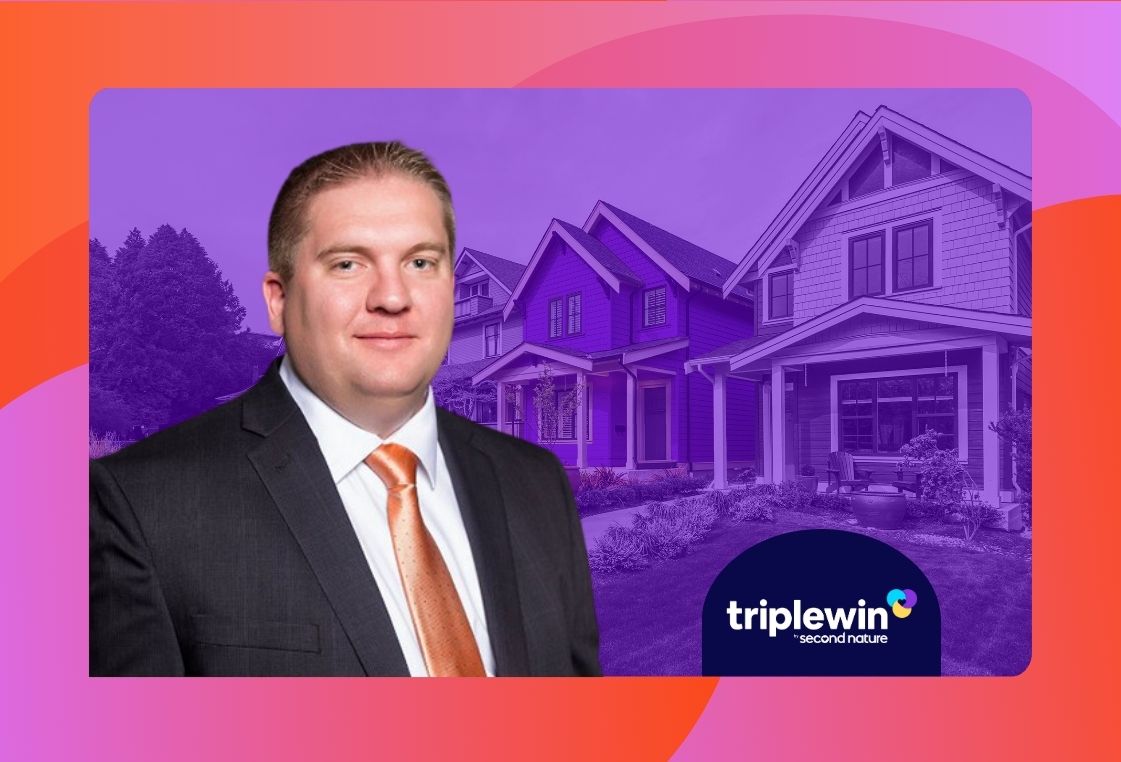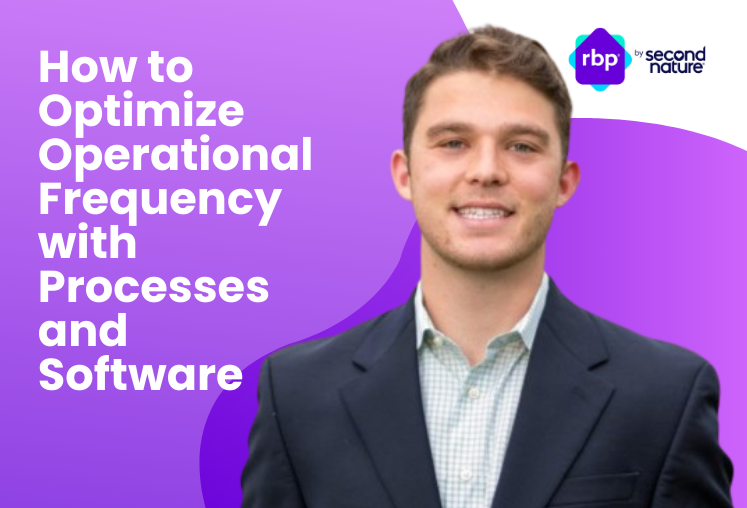A tenant self-service onboarding workflow is a system that enables new residents to complete the onboarding process by themselves using online portals, automated communication workflows, and chatbots, with minimal involvement from property management teams.
Why automate? Automation can provide smaller property management companies with an edge by streamlining processes, improving communication with residents, and reducing manual workloads. By leveraging tech tools such as property management software, online portals, and automated workflows, smaller companies can increase efficiency, provide better customer experiences, and compete with larger players in the industry.
Implementing tech is especially important – let’s actually say it’s imperative – in today's digital age, where residents expect instant communication and online access to property information. By embracing tech solutions, smaller property management companies can not only keep up with industry trends but also stay ahead of the competition.
Today we are talking with a leader in property management who has also been an early adopter of some of the most innovative new AI and tech solutions for the property management industry – Wolfgang Croskey. Wolfgang shares some of the best ways to automate your resident onboarding process and how to avoid pitfalls along the way.
Key Learning Objectives:
- Do I need to implement self-service workflows for resident onboarding?
- What are the greatest benefits of implementing this automated process?
- What are the pitfalls of tech and automation in resident onboarding?
- How do I create self-service onboarding workflows?
Meet the Expert: Wolfgang Croskey, Founder & President of How’s My Rental
Wolfgang Croskey has been working in real estate since he was a little kid. From stuffing envelopes, unclogging toilets, and serving notices to creating leases, he has touched on all aspects of property management. He is a well-respected member of NARPM, a servant leader to his community, and, to top it all off, a father of 6. Wolf has been a board member and president of the Pittsburg Chamber of Commerce, where he is currently the CEO, providing leadership and direction to the Chamber in their daily activities. He is also the Founder of How's My Rental, a site-awareness servicing California landlords as well as the founder of The Perfect Tenant, a Master Leasing Company.
A Note on Language:
At Second Nature, we prefer the term “residents” over “tenants.” It’s our belief that focusing on the people in every interaction helps us to create better, more valuable, and more profitable business strategies in the long run. Property management is all about focusing on what residents and investors – human beings – want and need! But through this article, you’ll see us use both “tenants” and “residents” due to the fact that many parts of our industry are very technical and require accurate terminology.

Why should you implement tenant self-service onboarding workflows?
Tenant, or – as we prefer to say here at Second Nature – resident onboarding is an essential aspect of property management. But as any PM will tell you, it can be time-consuming and resource-intensive.
That's why a resident self-service onboarding workflow can be a game-changer for property managers. By providing residents with online self-service portals, automated communication workflows, and chatbots, self-service onboarding workflows can reduce the need for manual work, streamline the onboarding process, and improve tenant experiences.
According to Croskey, property managers across the country are adopting self-service workflows and automation – but there’s still a lot of room for growth.
“There is a growing trend towards adopting self-service onboarding workflows in the property management industry, driven by the numerous benefits they provide, such as reduced manual work, faster lease execution, and improved resident experience,” Croskey says. “However, there may be some pushback from property managers who are hesitant to adopt new technology or concerned about potential security risks. Addressing these concerns through education and demonstrating the benefits of automation can help encourage wider adoption.”
As we’ve mentioned before, Croskey has called automation the “great equalizer.”
How? According to Croskey, “It allows us to compete with these nationwide companies and to provide not only the same level of service but to be able to pivot and adapt much quicker than those larger companies can. So for me, you're a smaller company, AI and Automation Tech is that equalizer that's going to allow you to shine just as well as these larger companies.”
Are there disadvantages to adopting more automation?
Croskey says there are areas of vulnerability for PMCs looking to automate their processes more deeply.
The issue? Not having those processes right in the first place. Croskey says he’s seen many property managers assume that AI is going to fix their problems.
“The reality is, if you don't have your policies, procedures, and processes in place, there is no tool on earth that's going to be able to save your bacon,” says Croskey. “Look at McDonald’s: At one point, some team had to roll up their sleeves and make the process of how to build the Big Mac. And it probably took quite a while to do that. But now that it's done, they haven't changed the Big Mac for at least 40 years. It's still the same nasty hamburger.”
With a chuckle, Croskey continues: “A lot of times, myself included, we try to find technologies that can help us avoid that initial work. You’ve got to roll up your sleeves, and you’ve got to get through that.”
How to create tenant self-service onboarding workflows
So, let’s say you’ve accepted that building self-service workflows gives massive advantages to your PMC. And let’s say you’ve established your processes in a way you’re confident is efficient, legal, etc. Now how do you create the automation to help new residents help themselves?
Here’s what Croskey advises, in his own words.
To create a resident self-service onboarding workflow, property managers should consider the following steps:
- Select Software: “To optimize your property management process, it's crucial to select software that offers robust onboarding automation features such as online applications, tenant screening, and digital lease signing.”
- Integrate Workflows: “Ensure the workflow is tailored to your needs and seamlessly integrates with your existing accounting, maintenance, and communication platforms.”
- Implement Data Security: “It's equally important to implement stringent data security protocols to safeguard resident information during the onboarding process.”
- Equip Resident with Resources: “Finally, equip residents with the necessary resources to familiarize themselves with the self-service workflow and provide comprehensive training to your team to ensure a smooth transition.”
With those steps in place, let’s look at some of the specific aspects of the onboarding process that property managers can start with when building self-service tools.
Virtual tours
Croskey explains that AI-powered chatbots can provide virtual property tours – answering questions, and offering additional information to potential residents in real-time.
Here’s how it works:
- Prospective tenants can access an online customer portal or chatbot that offers virtual tours of the property. They can interact with the chatbot to select a specific unit or area of the property they want to tour.
- The chatbot or other AI tech can then use VR or AR technology to provide a 360-degree view of the selected area. Prospective tenants can move around and explore the space as if they were physically there.
- The chatbot can also provide additional information about the property, such as floor plans, rental rates, and amenities.
Rental application
Nearly all automated property management solutions can provide automated rental applications.
Here are some tips on how to ensure you’re deploying it effectively:
- Provide residents with an online portal where they can submit their rental applications and supporting documents electronically. This can include personal information, employment history, rental history, and financial statements.
- Use automated workflows to guide residents through the application process and send notifications when additional information or documents are required.
- Implement electronic signature software to enable residents to sign and submit rental agreements and other legal documents online.
- Integrate the rental application process into your property management software to streamline the process and reduce manual workloads.
Beyond that, Croskey explains that “Chatbots can guide residents through the online application process, answering questions and providing support as needed.”

Tenant verification
Property managers can make tenant verification self-service by implementing tenant verification software into their property management system. These software solutions will help by:
- Leveraging an online portal where residents can submit their information and documents for verification, including rental history, employment verification, and credit checks.
- Using chatbots or automated workflows to guide residents through the process, answer questions, and provide them with updates on the status of their applications.
- Implementing secure authentication measures to ensure only authorized individuals can access and submit sensitive information.
Lease negotiation
Here are some steps to make lease negotiation automated or self-service:
- Property managers can create an online lease agreement platform accessible to residents via a unique login and password.
- The platform can provide residents with the ability to view and select available properties and rental units, along with the associated lease terms and rental rates.
- Residents can submit a lease application online, which can include information such as their employment history, income, and rental history.
- The platform can automatically screen the application, verifying information such as credit score, employment status, and income.
- Once the application is approved, the resident can negotiate lease terms such as the lease duration, rental rate, and security deposit directly with the property manager via the online platform.
- The online platform can use AI to generate a lease agreement that reflects the negotiated terms, which can be reviewed and signed by the tenant and property manager online.
Property services onboarding
Getting residents set up with all the services, utility connections, etc. that they need can be a hassle for everyone. You can end up answering several calls and questions, while they may spend hours on the phone trying to identify what they need and how to get it.
Self-service onboarding can make a huge difference. One example is Second Nature’s Movie-In Concierge, part of our full-service Resident Benefits Package. In one phone call, residents find out what their best options are and can even get help simplifying setup. An experienced concierge confidently guides multiple people every day to properly set up their utilities.
We’ve also automated filter delivery to ensure residents replace filters on time, which saves them roughly $15 per month in HVAC fees.
Document management
Property managers can make document management self-service by providing tenants with an online portal where they can access, upload, and sign documents. Here are some steps to make document management self-service:
- Property managers can create an online portal accessible to residents via a unique login and password.
- Set up permissions so residents can upload documents such as lease agreements, rental applications, and move-in checklists to the online portal.
- Property managers can upload documents such as rental payment receipts, notices, and lease addendums to the online portal.
- The online portal can provide residents with the ability to digitally sign documents, eliminating the need for paper-based signatures.
- Property managers can use automated workflows to track document submissions, ensure that all documents are complete, and send reminders to tenants who have outstanding documents.
- The online portal can be integrated with the property management software, ensuring all documents are properly filed and easily accessible.
Croskey adds that “AI can help organize, store, and retrieve documents related to the onboarding process, streamlining the experience for both property managers and residents.”
Resident communication
Here are some steps to automate resident communication and ensure residents can help themselves to the info they need.
- Property managers can create an online portal that can provide residents with information about their lease, rent payments, and property services, as well as the ability to submit service requests and communicate with the property manager.
- Chatbots or other AI tools can provide instant communication to residents during the onboarding process, answering questions and addressing concerns efficiently.
- Property managers can use automated workflows to send reminders to residents about rent payments, lease renewals, and move-in/move-out procedures.
- The portal can provide residents with the ability to report maintenance issues, request repairs, and track the status of their requests.
- Property managers can use automated workflows to manage and track service requests, assign tasks to maintenance staff, and ensure the timely completion of service requests.
- The portal can provide residents with access to a knowledge base or FAQs, where they can find answers to common questions about their lease and the property.
Maintenance coordination
AI and chatbots can help coordinate move-in inspections, maintenance requests, and repairs, ensuring a smooth transition for new residents.
The best way to do this is to implement a maintenance management system that integrates via an API with the resident communication platform.
- Property managers can provide new residents with access to the online portal, where they can submit maintenance requests and track the status of their requests.
- The portal can include a list of frequently requested maintenance tasks and allow residents to select the task and provide details about the issue.
- You can use an automated workflow to assign maintenance tasks to the appropriate staff member, schedule the task, and notify the resident of the scheduled date and time.
- The maintenance staff can update the status of the task on the portal, allowing the resident to track the progress of the repair.
- You can use data analytics to identify recurring maintenance issues and proactively address them before they become larger problems.
- Finally, you can provide residents with the ability to rate and provide feedback on the maintenance staff's performance, allowing property managers to continuously improve their service.
What are some of the best tools for implementing self-service onboarding workflows?
Several automation tools have emerged as industry leaders in resident onboarding. The best tool for your property management business will depend on your specific needs and requirements, says Croskey.
He recommends looking into some of the more popular options online, including:
- AppFolio: AppFolio is a comprehensive property management software that offers automated tenant onboarding, including online applications, screening, and lease signing.
- Buildium: Buildium provides an end-to-end resident onboarding solution, including application management, tenant screening, and electronic lease signing.
- LeadSimple: LeadSimple provides a process-oriented solution to onboarding a tenant. By using reactive templated emails, tenants have the ability to select options and then drive the process along.
What does the future of self-service onboarding look like?
We asked Croskey, and he answered:
As technology advances, self-service onboarding workflows can become even smarter by:
- Personalized onboarding experiences: AI can analyze resident data to tailor the onboarding process based on individual preferences and requirements.
- Integration with IoT devices: The onboarding process can be integrated with smart home devices, enabling residents to set up utilities, internet, or other services through voice assistants or other IoT interfaces.
- Enhanced data security: Advanced encryption and AI-driven security measures can better protect resident data during the onboarding process.
- Automated compliance checks: AI can automatically verify that leases and other documents comply with local, state, and federal regulations, reducing the risk of legal issues.
Final thoughts: Just get started!
Croskey says the key is to start learning how to use automation and AI now – and make sure you provide your team with the training and support they need.
“My recommendation is just to get started and try these new tools,” he says. “And as you grow more confident, make sure to do your team justice by providing them training and providing them opportunities to learn how to use these tools as well. It’s not fair to say, ‘Okay, starting tomorrow, we're using this brand new tool, have a nice day.’ Really focus on some training.”
You can learn more by listening to our podcast with Wolfgang: Everything You Need to Know about Practical AI for Property Management. We’re keeping our fingers on the pulse of this space – stay tuned for more!
Topics:



